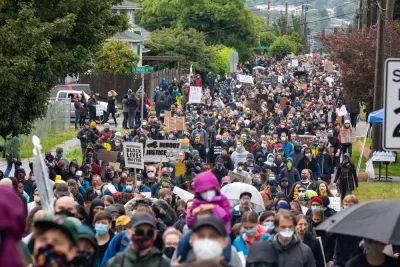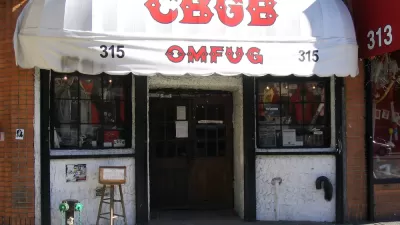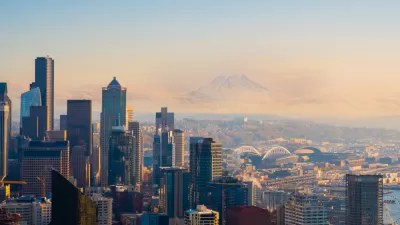The Seattle Planning Commission recently published a report titled "A Racially Equitable and Resilient Recovery."

The economic recovery from the Great Recession exacerbated inequality, according to an article by Natalie Bicknell. "Now as people look anxiously forward to a recovery from the current Covid crisis, government leaders, policy makers, and advocates are beginning to strategize over how to increase racial equity and build community resiliency during the recovery."
The Seattle Planning Commission (SPC), a 16-member volunteer body appointed by the Seattle's mayor and City Council, recently published "A Racially Equitable and Resilient Recovery" to ensure that planning processes will partner with historically marginalized and at-risk communities as the city digs itself out of the pandemic's economic hole.
The report recommend five key strategies, as listed here but with more detail provided in the source article:
- Working in collaboration with BIPOC communities to create a planning process that shares power with communities
- Advancing housing choices and security in response to COVID-19 while expanding homeownership opportunities for BIPOC communities
- Maintaining the critical transit network and ensure City rights-of-way meets safety and open-space needs for BIPOC communities
- Ensuring public spaces work for everyone by centering and implementing BIPOC visions for the public realm
- Investing equitably in healthy and climate-resilient communities
To supplement this information about the Seattle Planning Commission's plans for assisting in an equitable economic recovery from the pandemic, Seattle Planning Director Sam Assefa recently sat down for an interview with Amy Dillemith for the American Planning Association. In the interview, Assefa explains the way the Seattle Department of Planning and Development is assisting in short- and long-term recovery events. For the long-term, Assefa points specifically to issues of budget, executive orders from the mayor, and self-started activities from within the department.
FULL STORY: Seattle Planning Commission Maps Out Equitable Covid Recovery Strategies

Manufactured Crisis: Losing the Nation’s Largest Source of Unsubsidized Affordable Housing
Manufactured housing communities have long been an affordable housing option for millions of people living in the U.S., but that affordability is disappearing rapidly. How did we get here?

Americans May Be Stuck — But Why?
Americans are moving a lot less than they once did, and that is a problem. While Yoni Applebaum, in his highly-publicized article Stuck, gets the reasons badly wrong, it's still important to ask: why are we moving so much less than before?

Using Old Oil and Gas Wells for Green Energy Storage
Penn State researchers have found that repurposing abandoned oil and gas wells for geothermal-assisted compressed-air energy storage can boost efficiency, reduce environmental risks, and support clean energy and job transitions.

Updating LA’s Tree Rules Could Bring More Shade to Underserved Neighborhoods
A new USC study finds that relaxing Los Angeles’ outdated tree planting guidelines could significantly expand urban tree canopy and reduce shade disparities in lower-income neighborhoods, though infrastructure investments are also needed.

California's Canal Solar Projects Aim to Conserve Resources and Expand Clean Energy
California’s Project Nexus has begun generating electricity from solar panels installed over irrigation canals, with researchers and state agencies exploring statewide expansion to conserve water and boost clean energy production.

HHS Staff Cuts Gut Energy Assistance Program
The full staff of a federal program that distributes heating and cooling assistance for low-income families was laid off, jeopardizing the program’s operations.
Urban Design for Planners 1: Software Tools
This six-course series explores essential urban design concepts using open source software and equips planners with the tools they need to participate fully in the urban design process.
Planning for Universal Design
Learn the tools for implementing Universal Design in planning regulations.
Heyer Gruel & Associates PA
City of Moreno Valley
Institute for Housing and Urban Development Studies (IHS)
City of Grandview
Harvard GSD Executive Education
Salt Lake City
NYU Wagner Graduate School of Public Service
City of Cambridge, Maryland





























